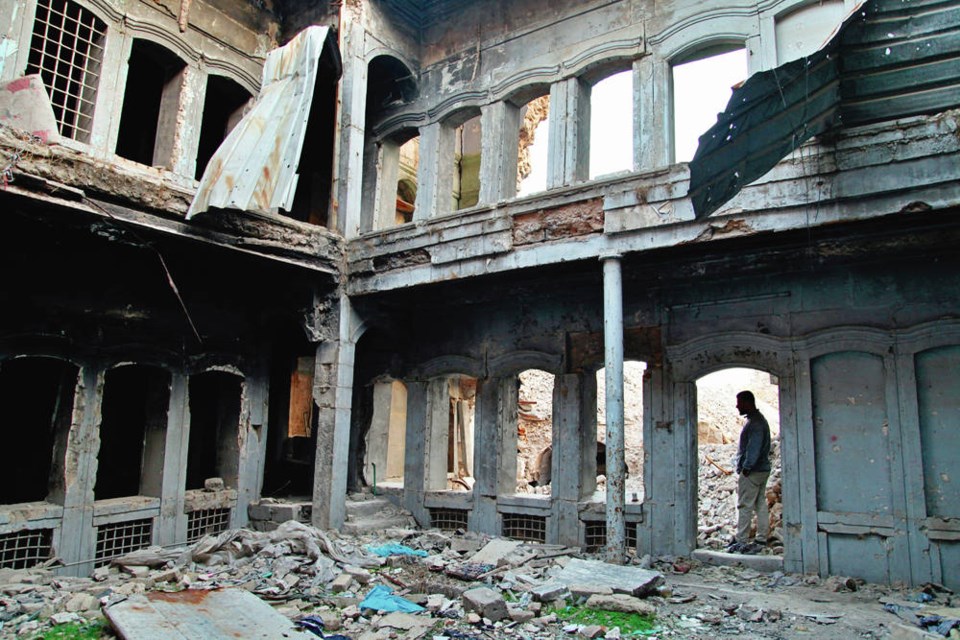News of the recent release of a four-year-old from an Islamic State detention camp in Syria, where she’d been detained with her Canadian mother, renews a years-long human-rights debate.
It also makes me nostalgic for a time when “ISIS” didn’t mean a violent guerilla group of extremists but referred to cutting-edge Canadian research technology.
There was a time when ISIS stood for “international satellites for ionospheric studies.”
In 1969, the ISIS 1 satellite soared into space, the third of four Canadian-designed and -built satellites launched to study the ionosphere and the northern lights. The first two satellites were called Alouette 1 and 2. Launch of the fourth satellite, ISIS 2, followed on April 1, 1971 — 40 years ago this week.
The ISIS satellites carried experiments to document and improve understanding of the physical processes of the ionosphere, an electrically charged layer of our upper atmosphere. Before communications satellites existed, radio signals were transmitted over long distances by bouncing them off the ionosphere. The transmissions were, however, vulnerable to aurora borealis activity, which often disrupted the radio waves.
ISIS 1 carried a complete set of direct measurement experiments and a tape recorder for data storage, with an onboard system that could turn the experiments and tape recorder on when the satellite was not in sight of a ground-based system to transmit to.
Aboard ISIS 2 were two optical sensors, including an instrument that scanned the aurora and measured the amount and intensity of their light. These sensors made it possible to produce the first images of the entire aurora borealis from above. The experiments collected measurements over a full 11-year solar cycle to determine how the ionosphere reacts to changes in the Sun’s radiation.
At the time, the technology was cutting-edge. The satellites and their research programs launched Canada as a global leader in space-based imaging, solar particle or plasma measurement, and communication satellite technology.
“ISIS” then and for years afterward stood for progress, achievement and hope for the future. Those connotations stand in direct contrast to the term’s current associations.
For the connotations to be subverted, we had to experience 9/11, wars in Iraq, Afghanistan, Libya, Somalia, Syria and elsewhere, and extremism, religious radicalization and terrorism.
“ISIS” today refers to the Islamic State of Iraq and Syria (also known as ISIL — Islamic State of Iraq and the Levant), an extremist jihadist group with a violent ideology that claims religious authority over all Muslims.
Inspired by al-Qaida but later publicly expelled from it, ISIS is known for killing dozens of people at a time, carrying out public executions, imprisoning and torturing journalists, and destroying valuable antiquities.
That the terrorist organisation is known by its English acronym is an accident of translation. Nonetheless, the reversal in meaning and association of the term “ISIS” leads directly back to those reports of children being held in detention camps and prisons with Canadian parents linked to the extremists.
The contrast between the scientific “ISIS” and the extremist “ISIS” brings into relief the current ongoing debate about those children, pitting human rights against potential threats to national security.
It’s often said that our children are our best for the future. If we educate them and give them hope, they will carry the fight forward for justice for all and a cleaner, more sustainable, more equitable future.
Therefore, while it’s unclear how a child of four years — for instance — could possibly be a risk to national security, it’s very clear how a child of four years who spends the rest of their formative years surrounded by and raised by extremists might later adopt and act on the beliefs and values they are exposed to during those critical years.
The ISIS satellite program of the 1960s and 1970s signalled Canadian hope and progress. Times are decidedly different now, and that long-ago research program is now largely forgotten.
However, the hope for a better future it inspired might be translated and channelled into giving Canadian children at risk of being radicalized options — and hope — for their own better futures. In doing so, we advance hope for our own collective futures.



